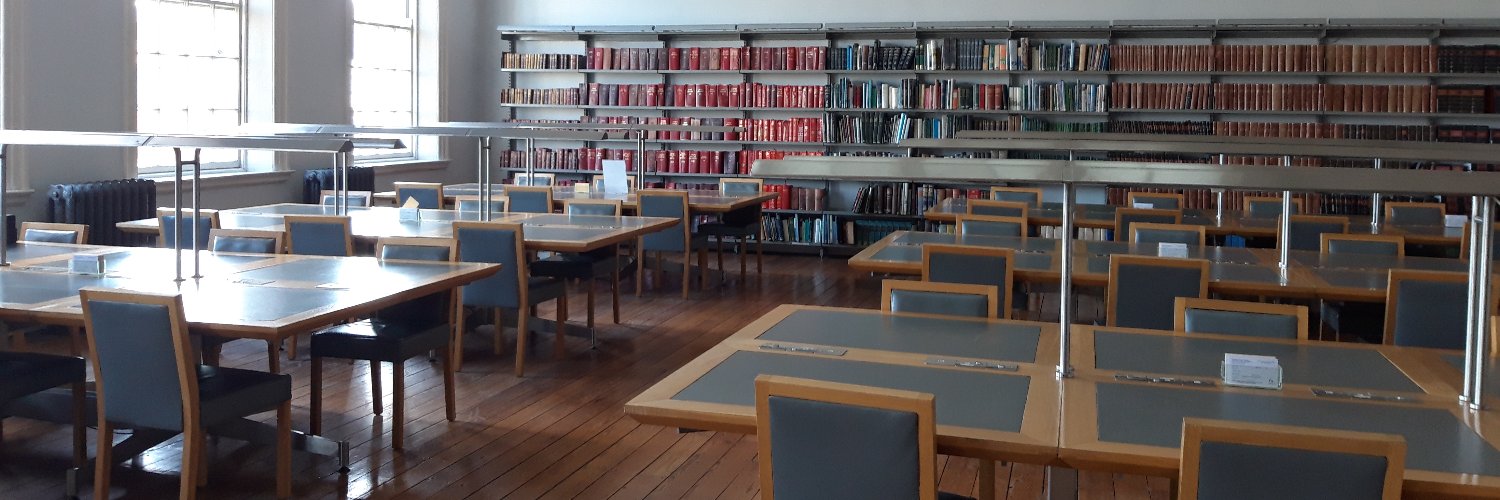
DCLA Reading Room
@DCLAReadingRoom
The Reading Room, Dublin City Library and Archive, 139-144 Pearse Street, Dublin 2 Tel: +353 1 2224999 We collect, care for and share Dublin's history.
This early 20th-century cartoon warned Dublin’s workers that strikes would lead only to “poverty and starvation”—depicting the strike as a hare, leading the workman astray. A stark reminder of how political art shaped public opinion and the struggle for workers’ rights.

The Dublin Theatre Royal was renowned for being a hub of entertainment, hosting a diverse range of performances such as variety acts, music and even showcased films. Bizarrely, It also often hosted a circus which included live animals.

This book is attributed to Kilkenny highwayman James Freney (c.1719–1788), published to fund his emigration from Ireland. After a failed business and debts, he turned to highway robbery, became notorious, and later betrayed his associates for a pardon, becoming a local legend.

Fenian leader James Stephens travelled to America and throughout Europe seeking support for the Irish republican cause. His visit aimed to strengthen ties with the Fenian Brotherhood in the United States and to secure funding and political backing for renewed efforts in Ireland.

🎵Join us for a FREE classic guitar recital with Chien Buggle on Wednesday 30 July at 6.30pm! The concert will take place in the beautiful surroundings of the Reading Room in Dublin City Library and Archive. 🎵 Booking essential as spaces limited: bit.ly/4kLXSIJ
View of the Liffey upriver toward Phoenix Park, showing the Cloth Mart (located in Home's Hotel) and Queen’s Bridge. Published in the 1830s, this engraving captures Dublin’s bustling river life, elegant quays, and 18th-century architecture.

Has anyone seen these? David has just sent me the pictures - previous winners of the Dublin lLiterary Awards on the steps of the library in the Ilac Centre. Fair play to @DublinLitAward @dubcilib @DublinCityofLit
The foundation of our Special Collections is the library of Sir John T. Gilbert, acquired by Dublin Corporation in 1902. With around 9,000 items—books, newspapers, manuscripts, and more—it’s a treasure trove of 17th and 18th-century works, some dating back to the 1500s.

In 1965, amid fears of nuclear war, the Government released a survival guide. It advised people to stay tuned to Radio Éireann, choose a windowless refuge room, fortify homes with furniture and earth, and stockpile food and 10 gallons of water per person.




The Tholsel was once central to medieval Dublin’s civic life—a hub for trade, taxes, city council meetings, and justice. Standing for centuries at a key crossroads, it saw the city evolve before being demolished in the early 1800s.

Take a look into life beyond the production line at Jacob’s Biscuit Factory. This 1910s social report reveals a vibrant workplace, with football matches, staff outings, and community events. Jacob’s wasn’t just about biscuits—it was about people.

This aerial shot of the Four Courts dates from the 1990s. Even though it is the recent past, we can still see how much the city has changed in 30 years

Between May 24–31, 1913, the Ovada Bazaar, was held at the RDS. The central hall was transformed into a detailed replica of the Italian town of Ovada, complete with shops, houses, gardens, and landscapes to transport visitors to Italy. Here is the layout


On Dec 16, 1913, the Gaiety Theatre hosted a concert and dramatic recital to support the women and children of locked-out workers during a turbulent chapter in Dublin’s history. Featuring music, dance, and drama including plays by Lady Gregory with entry costing just one penny

When you visited Dublin, you wanted to make sure your postcards home captured all the famous landmarks. Just one landmark would never do.


Last evening we were delighted to open our exhibition: Elizabeth Corbet Yeats: a neglected heroine. in assoc' Irish Guild Embroiderers. Open from 3 - 26 July, 2025: DLR Dundrum Library. With special thanks to Caitriona Yeats, @PierceDargan_ @DLR_Libraries @dlrheritevents
View of Dublin from the Phoenix Park 1818, from Warburton, Whitelaw, and Walsh's History of Dublin shows the view from Phoenix Park. Some Dublin landmarks such as The Royal Hospital Kilmainham and an 18th Century windmill can be seen. Do you recognise any other landmarks?

This Dublin map was created after the 1913 tenement collapse on Church Street. It documented derelict sites and dangerous buildings, highlighting the housing crisis and city neglect, and played a key role in the investigation into Dublin’s overcrowded tenement

A stunning first edition of The Happy Prince and Other Tales (1888)—beautifully illustrated by Walter Crane. These heartfelt, imaginative stories by Wilde charm readers of all ages with wit, lyricism, and moral insight. A true treasure on our shelf.



